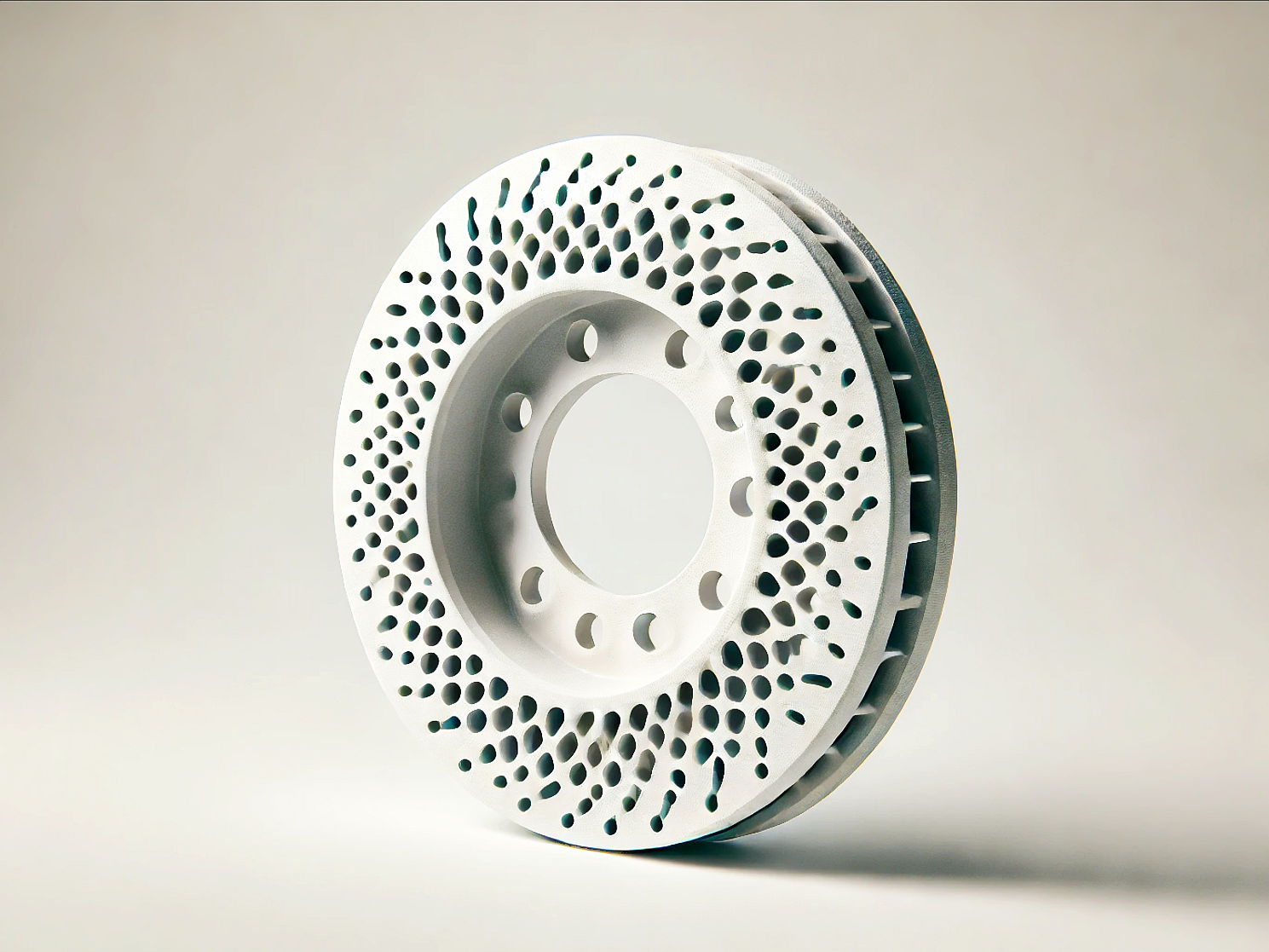Magnesium Oxide (MgO) 3D Printing: High-Temperature Ceramic Brake Disc
Introduction
Magnesium Oxide (MgO) 3D printing offers new capabilities in manufacturing high-temperature, high-durability ceramic components, particularly for extreme performance applications like ceramic brake discs. By applying advanced ceramic 3D printing technologies such as Vat Photopolymerization and Binder Jetting, Magnesium Oxide (MgO) parts achieve exceptional thermal resistance, mechanical strength, and chemical stability.
Compared to traditional ceramic forming methods, MgO 3D printing enables the production of complex, customized designs with faster turnaround times, optimized weight distribution, and improved thermal performance.
Applicable Material Matrix
Material | Purity (%) | Flexural Strength (MPa) | Thermal Conductivity (W/m·K) | Max Operating Temp. (°C) | Special Features |
|---|---|---|---|---|---|
>99% | 70–100 | 30–60 | 2200 | Excellent thermal stability, electrical insulation |
Material Selection Guide
Magnesium Oxide (MgO): Perfect for ultra-high-temperature brake disc applications, offering thermal stability above 2000°C, excellent thermal conductivity, and resistance to chemical attack, crucial for performance automotive and aerospace sectors.
Process Performance Matrix
Attribute | Ceramic 3D Printing Performance |
|---|---|
Dimensional Accuracy | ±0.1–0.2 mm |
Density (after sintering) | >98% Theoretical Density |
Minimum Wall Thickness | 1.0–2.0 mm |
Surface Roughness (As-Sintered) | Ra 5–10 μm |
Feature Size Resolution | 150–250 μm |
Process Selection Guide
Extreme Thermal Resistance: MgO parts withstand continuous use at temperatures over 2000°C, ideal for high-speed, high-friction environments like braking systems.
Excellent Thermal Conductivity: Rapid heat dissipation reduces thermal stress and minimizes the risk of cracking or warping under cyclic loading.
Chemical Stability: MgO resists degradation by molten metals, slags, and aggressive atmospheres, ensuring longer component lifespan.
Complex Designs: 3D printing allows for optimized internal cooling structures and lightweight design strategies to maximize braking performance.
Case In-Depth Analysis: High-Temperature MgO Ceramic Brake Disc for Motorsports
A motorsport engineering firm required a next-generation ceramic brake disc capable of withstanding sustained extreme braking temperatures without losing structural integrity. Using our Magnesium Oxide 3D printing service, we produced MgO brake discs achieving flexural strength over 90 MPa, thermal conductivity up to 55 W/m·K, and maintaining mechanical stability beyond 2000°C. The design incorporated internal venting channels created via 3D printing, reducing disc weight by 20% and improving cooling efficiency by 30%. Post-processing included precision machining and surface finishing for optimal fit and wear resistance.
Industry Applications
Automotive and Motorsports
Ultra-high-temperature brake discs for performance racing vehicles.
Lightweight ceramic rotors for supercars and hypercars.
Thermal barrier components in engine bays.
Aerospace and Aviation
High-temperature structural ceramics for spacecraft and re-entry vehicles.
Thermal protection systems in jet engine hot sections.
Lightweight, high-temperature-resistant brackets and shielding.
Energy and Power
High-temperature insulators and spacers for thermal plants.
Crucibles and containment vessels for molten metal and glass industries.
High-end thermal management systems for renewable energy equipment.
Mainstream 3D Printing Technology Types for Magnesium Oxide Ceramic Parts
Vat Photopolymerization (SLA/DLP): High-resolution ceramic parts with smooth surfaces, ideal for detailed MgO components.
Binder Jetting: Efficient for producing larger or batch-manufactured MgO parts requiring post-sintering.
Material Extrusion: Suitable for robust MgO structures with moderate feature complexity.
FAQs
What are the thermal advantages of using Magnesium Oxide for 3D printed brake discs?
How does MgO 3D printing compare to traditional ceramic disc manufacturing?
What post-processing is required for MgO 3D printed components?
Can MgO 3D printed parts be used in continuous high-friction applications like racing?
What industries can benefit from custom 3D printed Magnesium Oxide parts beyond automotive applications?

